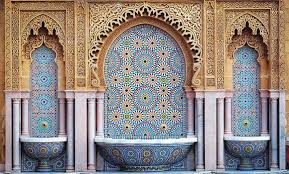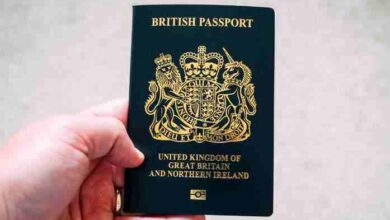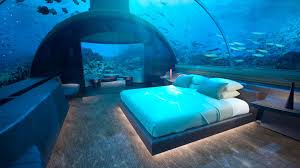Casablanca : True colors of Arabia
 Hanan Mohammed: Casablanca is Morocco’s largest city; it is a cosmopolitan Atlantic port, an alluring blend of traditions and modernity. The city celebrates its Roman roots and midcentury elegance with contemporary touches, including a sleek tram system across its center.
Hanan Mohammed: Casablanca is Morocco’s largest city; it is a cosmopolitan Atlantic port, an alluring blend of traditions and modernity. The city celebrates its Roman roots and midcentury elegance with contemporary touches, including a sleek tram system across its center.
In the oldest part of town, wanderers can buy fresh fruit and vegetables off wheeled carts, drink Moroccan tea outside the mosque and engage with the gregarious locals. In the other part of the city, you can dine in high-end restaurants, stay at luxurious hotels and indulge in a luxury shopping spree at Galeries Lafayette, watch a 3-D movie or peer into a three-story aquarium.
Casablanca, Spanish for white house, is the business hub of Morocco. Leading local Moroccan companies and international corporations doing business there have their headquarters and main industrial facilities there. Recent industrial statistics show Casablanca retains its historical position as the main industrial zone of the country. The Casablanca port is one of the largest artificial ports in the world and the largest port of North Africa. The port is also the primary naval base for the Royal Moroccan Navy.
People from around the world visit this city searching for the real essence of Arabia where the food is internationally celebrated, the architecture is inspiring, and the culture is a reflection of a true Arab culture.
Hassan II Mosque:
It is the largest mosque in Africa and the 7th largest mosque in the world. Its minarets are the world’s tallest at 210 meters. The mosque was designed by Michel Pinseau and was finally completed in 1993. The prestigious mosque overlooks the Atlantic Ocean; you can see the seabed through the glass floor of the building’s hall. The walls of this majestic mosque are made of handcrafted marble and the roof is retractable. The mosque has a capacity of 105,000 worshippers who gather together five times a day for prayer — 25,000 people inside the mosque and another 80,000 pray outside the mosque.
Musee Abderrahman Slaoui:
Abderrahman Slaoui’s Foundation Museum was opened in May 2012; it is named after businessman Abderrahman Slaoui who was known for his love of art. The Musee De La Fondation Abderrahman Slooui is dedicated to Moroccan jewelry and décor and is set up in a charming art deco building dating back to the 1940s.
Slaoui was a world traveler and a treasure hunter for over fifty years. His art collection and pieces are the result of patience and persistence in creating a luxurious art collection. The museum was born out of Slaoui’s exhibitions of “Moroccan Treasures” and opened several months prior to his death.
Old Medina of Casablanca:
Located in the north of the city between the port and the majestic seafront Hassan II Mosque, the Old Medina of Casablanca encompasses the last vestiges of pre-20th century Casablanca. Up until the French took over in 1907, the coastal city was defined by this small zone, encircled by defense walls and presided over by the Portuguese-built Borj Sidi Mohammed Ben Abdallah Fort. Today, the modern city has grown out in all directions but the historic quarter remains, still surrounded by the remnants of its city walls and the 18th century fort.
The Old Medina is home to a sprawling souk, selling everything from the famous Moroccan colored pottery, silk linens, brass-work and leather goods to traditional handicrafts, jewelry, food and spices. In stark contrast to the elegant squares and grandiose architecture of the modern town, strolling around the Old Medina is like stepping back in time, where you can rummage for goods among the ramshackle stalls and haggle for bargains with friendly merchants while sipping sweet mint tea.
Place Mohammed V:
It was designed by the famous architect Henri Prost. The grand square is surrounded by public buildings whose designs were later copied in buildings throughout Morocco, including the law courts, the old police headquarters, now the governor’s office, Bank Al-Maghrib, the post office and the Ministry of Defense building. You will find many grand boulevards lined with wonderful architecture here. To the south is the Parc de la Ligue Arabe, designed in 1918 with a majestic palm-tree-lined promenade.
The square is embellished with a large central fountain and dotted with palm trees. It is lined by the courthouse and the prefecture, whose tower looks down from a height of 50m. A statue between the two buildings pays tribute to General Lyautey, who built the port of Casablanca.
The Quartier Habous:
The Quartier Habous, or nouvelle medina, is an idealized, almost toy-town version of a traditional medina with neat little rows of streets and shop stalls. The district was built by the French in the 1930s as an attempted solution to the ongoing housing shortage. It marries the best of traditional Moroccan architecture with modern facilities and French ideals — even the mosque fronts onto a strip of grassy lawn just like a village church.
For fans of the bustle and chaos of traditional markets, it may feel too sanitized to be authentic, but if you fancy some Moroccan character without the associated smells and hassle, it’s got a decent selection of bazaars, craft shops, bakeries and cafés.
The Marché Central
It is located in the heart of the Casablanca city center, just a short stroll or tram ride from United Nations Place. The Marche Central de Casablanca is the city’s main market, located along the busy shopping street of Muhammad V Boulevard. Crammed with locals, the daily market is a fascinating place for tourists to get a taste of local culture, as well as pick up bargains, with everything from food to fresh flowers and traditional clothing on sale.
It is a great place to go for lunch — busy tables from half a dozen restaurants thrum with diners and waiters, serving up huge platters of fish, grilled vegetables, bread, salads and seafood soup. Cheap, filling, and perfect for people watching.
The vibrant stalls serve up a myriad of fresh produce, with mounds of fruit and vegetables, a vast array of fish and shellfish, and a rainbow of spices filling the senses with exotic sights and smells. This is also a popular spot for lunch, with a number of renowned fish restaurants and hole-in-the-wall eateries lining the market place.
Mahkama du Pacha:
Moorish arches and richly decorated walls distinguish the Mahkama du Pacha (Courthouse of the Pasha), which dates back to the 1950s and today is a venue for official functions.
Inside there is a wonderful variety of rich furnishings and finishes. The ceilings are made of carved cedar wood that blends with the chiseled stucco and multi-colored mosaics, which can be found decorating the interiors. There are also white marble columns that gracefully adorn the ceiling of the structure. Throughout the building are geometric designs, which lend a sense of beauty to the building’s interior. A wonderful open central courtyard adds a feeling of space and light to the building.
The palace is regularly used to receive state guests. The imposing marble columns, intricate stucco mosaics and carved cedar ceilings will make a lasting impression on any visitor. Put it on your to-do list the next time you’re in Casablanca.





